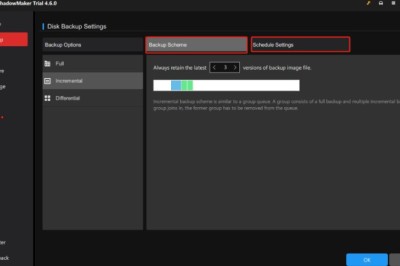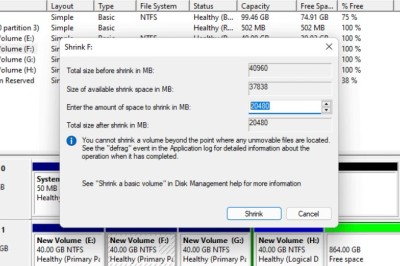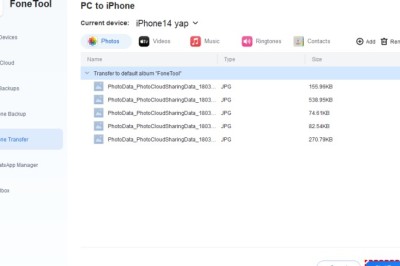views
As we may all have observed, the field of events is one of the industries that has undergone such a significant shift over the past couple of years, due in large part to the COVID-19 pandemic. Social distancing measures and restrictions on large gatherings have made it absolutely necessary for event planners to explore new ways of hosting corporate events, leading to the rise of virtual events.
However, as the world starts to reopen, there is a growing interest in hybrid events, which combine in-person and virtual elements. In this blog, we’ll explore everything we can about hybrid events, their benefits, and how you can plan and execute a successful hybrid event yourself.
What are Hybrid Events?
Hybrid events are events that combine in-person and virtual components. They allow attendees to participate in an event both physically and virtually, creating a unique experience that expands the reach of an event beyond the physical location.
By incorporating virtual elements into events like leadership summits or small-scale conferences, such as live streaming sessions and interactive virtual networking opportunities, hybrid events can enhance engagement and extend the impact of the summit or conference beyond just the in-person attendees.
Benefits of Hybrid Events
If you haven’t considered hybrid events yet, here are some reasons why you should:
1. Increased Reach
Hybrid events allow organizers to reach a wider audience, including those who may not be able to attend the event in person due to geographical or financial constraints. This expands the event’s reach, creating a broader audience and generating more opportunities for engagement and exposure.
2. Flexibility
Hybrid events offer flexibility in terms of attendance. Attendees can choose to attend the event in person or virtually, giving them the freedom to choose the option that works best for them. This flexibility also allows organizers like you to offer different ticket options, such as virtual-only tickets, to cater to different audiences.
3. Cost-Effective
Hybrid events can be more cost-effective than in-person events, as they require less travel and accommodation expenses for virtual attendees. Organizers can also save on venue costs by opting for a smaller physical space, as they do not have to accommodate all attendees in person.
4. Increased Engagement
Hybrid events offer a variety of engagement opportunities, both in-person and virtually. Attendees can participate in live sessions, virtual networking events, and interactive polls and surveys, increasing engagement and participation levels.
Planning and Executing a Successful Hybrid Event
So, you want to host a hybrid event? To ensure success, consider doing the following:
1. Set Goals and Objectives
As with any kind of event, define what your goals and objectives are. Ask yourself what you hope to achieve from the event, such as increasing engagement, generating leads, or driving sales. These goals will help guide your planning process and help you determine the format and metrics you will use to measure success.
2. Choose the Right Platform
Next, you’ll want to choose the right platform for hosting your hybrid event. The platform should be able to accommodate both your in-person and virtual attendees, be user-friendly, and provide the necessary features such as live streaming, chat, and virtual breakout rooms. Some popular platforms you can look into are Zoom, Microsoft Teams, and Webex.
When selecting a platform, these are the considerations you must look into:
- The number of attendees the platform can support
- The platform’s pricing structure
- The level of technical support offered by the platform
- The platform’s security features
3. Invest in Technology
If you want your virtual and in-person elements to seamlessly integrate, it’s best to consider investing in high-quality technology. This may include equipment such as cameras, microphones, and screens, as well as software for streaming, chat, and polls.
It’s important to ensure that the technology you use is reliable and can handle the demands of a hybrid event. Consider conducting a technical rehearsal prior to the event to identify and address any potential issues.
4. Ensure Quality Content
Providing high-quality content that is relevant, informative, and engaging is crucial for a successful hybrid event. This may include keynote speakers, panel discussions, and interactive sessions that encourage participation and interaction.
So, when planning content for your hybrid event, consider the following:
- The length of each session
- The format of each session (e.g., panel discussion, keynote speech, interactive session)
- The level of audience participation encouraged during each session
- The timing of each session to ensure that in-person and virtual attendees can participate
5. Consider Attendee Experience
Both your in-person and virtual attendees should have a positive experience that is engaging, informative, and comfortable.
To ensure this, consider the following factors when planning:
- Comfortable seating and refreshments for in-person attendees
- Easy access to the event content for virtual attendees
- Opportunities for networking and engagement for both in-person and virtual participants
- Clear instructions for attending the event, both in-person and virtually
6. Promote the Event
If you want to attract more attendees, make sure to promote your hybrid event everywhere possible. Consider using a combination of marketing channels, such as social media, email marketing, and advertising.
Highlight the unique features of your hybrid event, such as the flexibility of attending in person or virtually and the diverse engagement opportunities.
7. Prepare for Technical Issues
Technical issues during hybrid events are inevitable. They can range from poor internet connections to malfunctioning equipment, and they can disrupt the flow of your event.
So to prevent and prepare for technical issues, try doing the following:
- Conducting a technical rehearsal prior to the event to identify and address any potential issues
- Having a technical support team on standby during the event to address any issues that may arise
- Communicating with attendees about technical issues and how they will be addressed
Turning To Hybrid Events For Better Engagement
What’s great about hybrid events is that they give you a unique opportunity to combine the benefits of in-person and virtual events, creating a more engaging and impactful experience for your attendees.
As the world continues to adapt to the changing event landscape, hybrid events are sure to become an increasingly popular option for event planners looking to maximize the results of the various events they host.
For more insightful articles about business and marketing, check out WONGCW’s Blog today!























Comments
0 comment